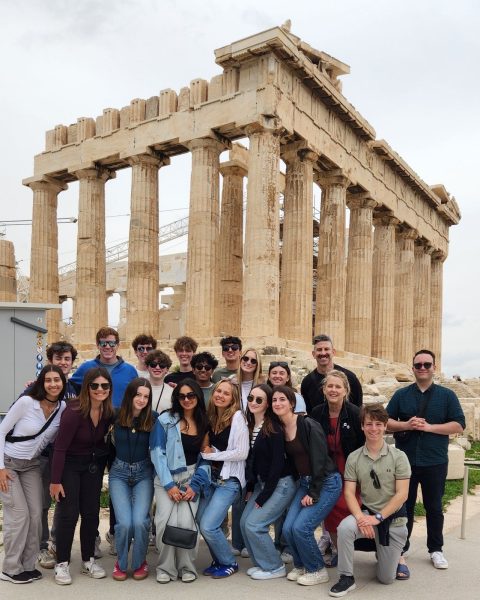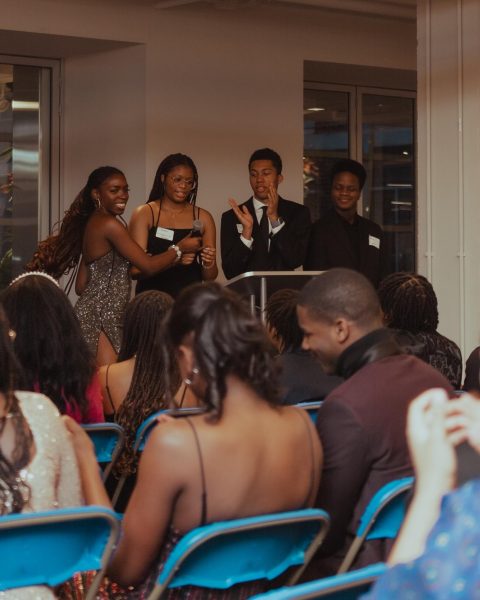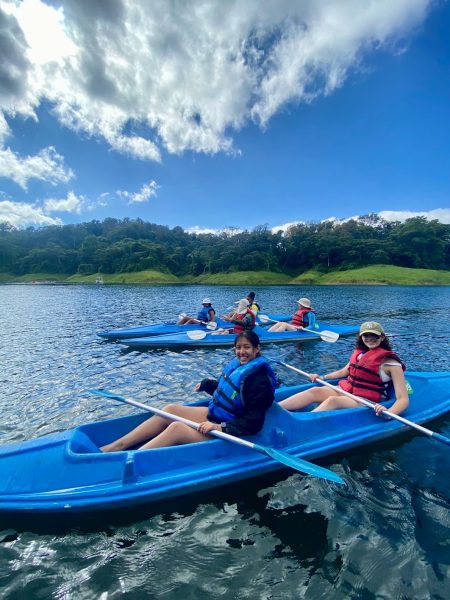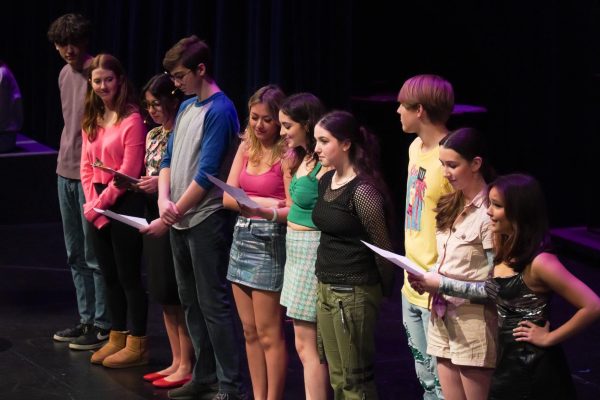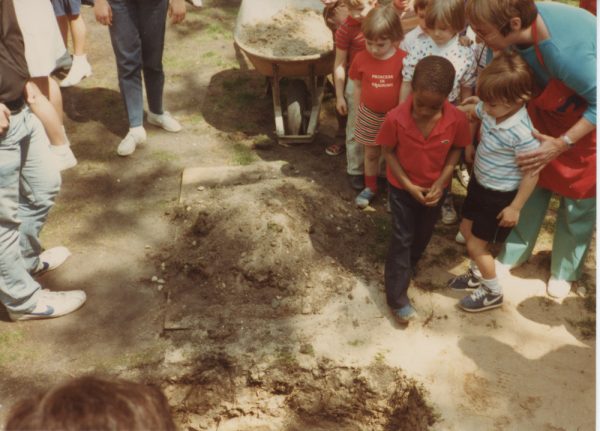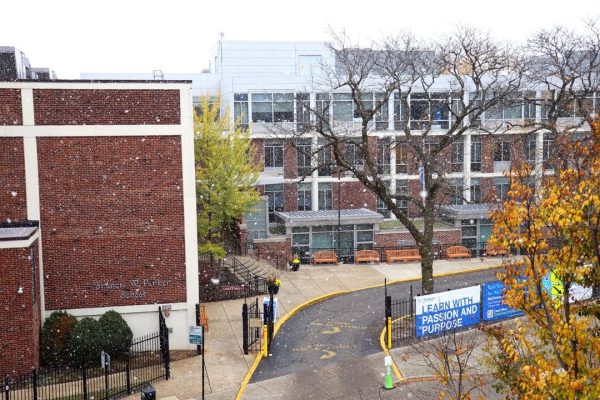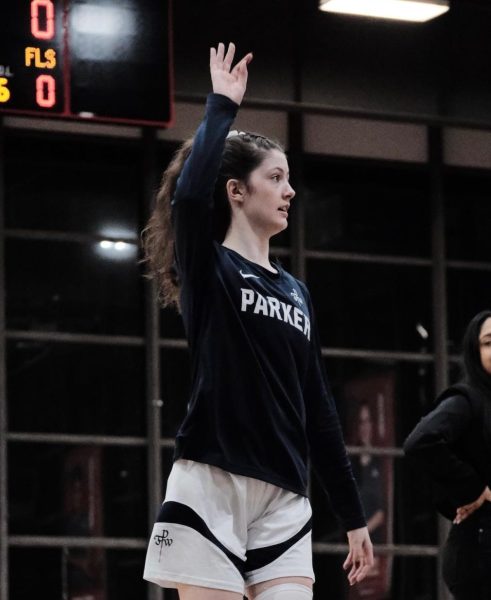Standing in Support
Members of the Community Fight the Dakota Access Pipeline
On April 1, 2016, a group of 200 Native Americans rode horseback to Standing Rock, North Dakota to protect water that they believed was at high risk of contamination by the Dakota Access Pipeline. Now thousands of people both of Native and non-Native American backgrounds show up each day to protect the water, the environment, and the sacredness of Standing Rock. Sixth Grade History teacher Keedra Gibba and Head of Civic Engagement Shanti Elliott visited Standing Rock in November to stand with the indigenous people at Standing Rock.
The conflict at Standing Rock began in 2014 with Energy Transfer Partners LP’s plans to build a crude oil pipeline stretching from Illinois to North Dakota. There is a large amount of undiscovered oil that, if the pipeline is built, is estimated to pump around 347 million gallons of oil per day. Similar pipes to the one being built have been known to break down and pollute the water, on top of that, the Dakota Access Pipeline runs over an ancestral burial ground sacred to the Sioux Standing Rock Tribe and the Lakota Tribe.
40 miles away from Standing Rock, a similar pipeline has broken down and polluted the water in an area. “There has been research on this matter,” Gibba said, “and the chances of this pipeline breaking down and polluting the water are inevitable.”
Gibba went over Thanksgiving, skipping the festivities back home, to join in solidarity with the indigenous people at the reservation. “I thought it was a great way to spend the so-called ‘thanksgiving’ with indigenous people,” Gibba said, “who feel that on that day when people are feasting they just forget about the myth, the subsequent lies, and genocide that has continued to go on.”
Students are often taught from a young age the story of the pilgrims and Native Americans enjoying a turkey meal, but the oppression and genocide that the pilgrims brought upon indigenous people are frequently left out. Although this occurred over 300 years ago, many Native Americans are still mistreated today by being denied the rights to their land and ancestry.
Elliott visited Standing Rock directly after the presidential election from the 9th of November to the 12th. “I really wanted to be able to bring students who were interested,” Elliott said, “but the situation on the ground was changing day-to-day, and I needed to see what it was like before bringing students.”
Those at Standing Rock call themselves “water protectors” rather than protesters. The area where the government plans to dig is called Turtle Island, a big mound and burial ground for the Lakota people. “On top of it there is the military in full gear ready to do whatever to the water protectors,” Gibba said, “who come everyday with the message of ‘come down from our burial ground and don’t do this.’”
Gibba went to Turtle Island and observed what was going on. “It’s all very peaceful and prayerful,” Gibba said. “The water protectors are very clear about using non-violent action in our orientations. There are no weapons allowed.”
Elliott also described her experience in a similar light. “I really did feel welcomed,” Elliott said. “I had been nervous about going into this tribal space, because I didn’t want to impose. The Lakota hosts of the camp were gracious and generous, sharing their space, their stories, and their ceremonies.”
Direct actions are taken multiple times a day there, and Gibba recalls she partook in during her visit. According to Gibba, earlier in the day when she went to Turtle Island, many water protectors were hosed down by military forces. In just a few hours, the media became aware of the incident through people posting videos and images online, and the violent acts were stopped. “What the water protectors like for people to understand, especially if you are going to go there, is media is really important,” Gibba said. “It’s important for everyone to know what the state is doing in response to this peaceful protest.”
There are three different encampments at Standing Rock which combined hold thousands of people: Oceti, where many of the major events occurred, Rosebud, where Gibba stayed, and Sacred Stone. “Over 3000 indigenous nations have come together, and that hasn’t happened in several years,” Gibba said. “It was a really significant part of history.”
After her visit, Gibba wrote an article about her experience called “Stolen People On Stolen Land: Standing Rock and Black Liberation” in the Praxis Center at Kalamazoo College. Gibba continues to support and stay in touch with the indigenous people she met during her time there. “We’ve kept in touch since then,” Gibba said. “We have a Facebook group of what we’re doing in our home spaces and the work we are trying to do with decolonization and solidarity.”
Decolonization is when a colony becomes self-governing, according to dictionary.com.
Head of Clean Water Club and sophomore Bella Evan-Cook tries to inform the Parker Community about Standing Rock with her club. Evan-Cook said, “We often discuss the pros and cons of this pipeline project, and try to get different standpoints on the matter.”
Elliott was grateful for the opportunity to engage with other communities. “Though I have organized around environmental justice for many years, it has always been at a local level,” Elliott said. “The Water Protectors show us how to connect issues like climate change and state violence to local struggles, and how to build solidarity and momentum across communities.”
As Elliott reflected on her trip, she found it most important to hear what the Native Americans wanted people to understand. “Most importantly, they want to make sure people understand that this is bigger than the pipeline,” Gibba said. “It’s larger than that. The fact that indigenous people have not been able to relate to the land they have been doing for thousands of years is an issue.”
If you’d like to read more about Gibba’s experience, click here.
If you’d like to read more in depth cultural context about this struggle and ways you an support, click here.




